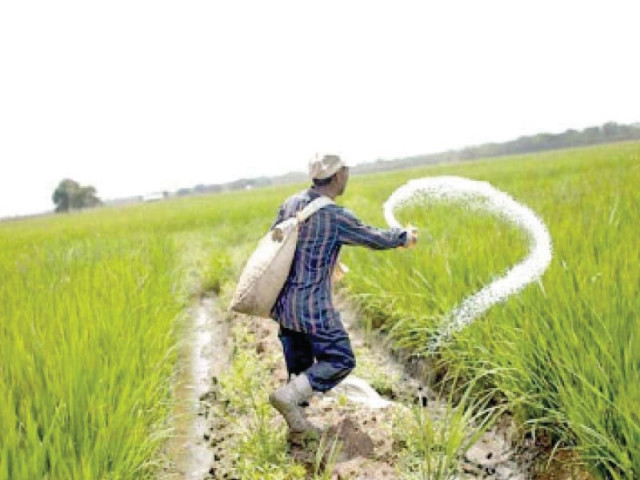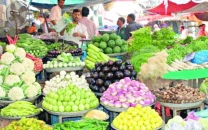Three ways to transform farming
Green Revolution based on knowledge-intensive agriculture is in hands of youth

The future of agriculture hinges on the integration of climate-smart technologies and education. By leveraging artificial intelligence, big data, and innovation, developing countries can turn agricultural challenges into growth opportunities.
Given current trends in population and wealth growth and the impacts of climate change, another quantum leap in food systems is needed. The Green Revolution, which began half a century ago, focused on resource-intensive agriculture that significantly increased productivity through the development of high-yielding varieties such as rice, wheat, and maize.
The next Green Revolution must be based on climate-smart agriculture aiming for net-zero emissions while achieving a quantum leap in food production to deliver benefits for all, including people in poverty and hunger.
This requires knowledge-intensive agriculture that leverages digital but low-cost technologies to address climate change. To achieve this, capacity building for key stakeholders in the agricultural sector is critical, particularly by revamping agricultural tertiary education in developing countries to enable tech-savvy youth to succeed as “agropreneurs”.
Fourth Industrial Revolution technologies, such as artificial intelligence (AI), the Internet of Things, blockchain and big data analytics, are bringing disruptive changes in agriculture.
For example, analysis of satellite imagery can identify the most suitable land for specific agricultural crops. An AI-powered agriculture drone sprays the minimum amount of fertiliser to maximise agricultural production and provides traceability in the use of fertiliser for low-carbon farming.
Farmers could harvest crops by operating automated harvest machines at home, and their food delivery to consumers could be tracked using blockchain technology to improve food safety. This is no longer a dream.
If high technology adoption is successful, agriculture can be a major economic growth engine. Typically, the share of agriculture in gross domestic product declines and that of manufacturing and services increases as the country makes progress in economic development.
The food industry, however, has the potential to provide quality jobs by leading the economy. For instance, an economic corridor study in Bangladesh identified food processing as one of the highest priority industries for economic diversification.
Among developed countries, the Netherlands is the world’s second largest exporter of agricultural products and an exemplary case of agriculture leading the country’s sustainable development.
The Netherlands has a well-established framework that emphasises collaboration between government, industry, and knowledge institutions. Agricultural innovation is supported by world-class agricultural universities, such as Wageningen University and Research, which conduct leading research, and undertake knowledge and technology transfer, and start-up support in agriculture.
There are many challenges facing agriculture in developing Asia and the Pacific. The majority of farmers in the region are small landholders, and agricultural extension services may not be able to act on their own as a hub for high-tech transfer due to a lack of facilities and expertise.
Agricultural universities are better positioned for technology adoption by collaborating with experts such as industries and agricultural extension workers.
However, youth are less interested because they view agriculture as a labour-intensive, low-tech and low-wage occupation. Many agricultural university graduates tend to seek stable government jobs rather than contribute to the agricultural industry.
The key to the next Green Revolution lies in transforming agricultural education and leveraging high-tech innovations to drive sustainable development and economic growth in developing countries.
What are the solutions? The key is to transform agricultural tertiary education by fostering collaboration across the disciplines and countries for technology adoption.
First, agricultural tertiary education needs to facilitate deep interdisciplinary collaboration. AI and big data analytics are led by computer and geospatial scientists, and agricultural experts need to work together.
Similarly, mechanical engineers can advise on the use of drones and robots. High technologies can be scaled if they are commercially viable, and economically and financially sustainable, so social sciences have a role to play.
Today, many agricultural universities have engineering or technology faculties but this is not enough. A case in point is the interdisciplinary thesis lab implemented in the Netherlands.
For example, master students at three universities in the Netherlands (an alliance of Leiden-Delft-Erasmus universities) work on the same problems to develop multidisciplinary solutions to innovate agro-food systems. Similar mechanisms can be mainstreamed for agricultural tertiary education institutions.
Second, agricultural universities lead local technology adoption, especially with youth for the benefit of farmers. The National Instrumentation Centre for Environmental Management in the Seoul National University College of Agriculture and Life Sciences maintains high value agricultural research equipment and makes its facilities commercially available to industries, universities and research institutions.
The centre also actively hosts school children for study tours, which can help change the traditional perception of agriculture as a labour-intensive occupation. Most importantly, the agricultural universities must ensure that high technologies benefit local farmers in their own country and regional context.
Finally, a global alliance for adopting agricultural technology can catalyse this transformation. The Republic of Korea is interested in establishing a Global High-tech climate-smart agricultural university network.
A leading agricultural university in each sub-region could serve as a regional hub, absorbing the latest evidence-based agricultural technologies from global hubs and disseminating them in each sub-regional context considering field challenges faced by the farmers.
Some of the best agricultural universities in the Asian sub-regions, such as Bangladesh Agricultural University and University of Agriculture Faisalabad in Pakistan, are showing strong interest in joining the network.
The idea comes is timely for revamping agricultural tertiary education. The next Green Revolution based on knowledge-intensive agriculture is in the hands of our youth, and we need to give them the wisdom and courage to embrace new technologies across geographical, academic, and institutional boundaries.
If countries and universities, along with international organisations, come together to do this, we can turn current challenges into opportunities, making agriculture the future growth engine of developing countries.
Ryotaro Hayashi is Senior Social Sector Economist, ADB Human and Social Development Sector Office, Sectors Group; Noriko Sato is Senior Natural Resources Specialist, ADB Sectors Group, currently based in Pakistan; and Changgil Kim is visiting scholar, Seoul National University Asia Centre



















COMMENTS
Comments are moderated and generally will be posted if they are on-topic and not abusive.
For more information, please see our Comments FAQ